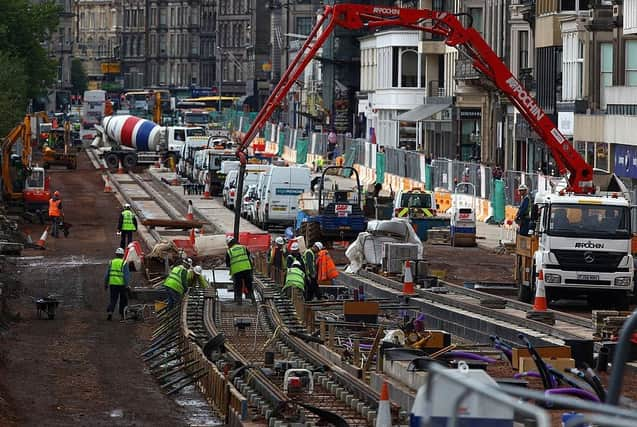City’s good life is really provided by the financial services sector - John McLellan


The optimistic presentation of the city council’s latest Edinburgh by Numbers report reflected higher-than-average pay (median hourly rate £17.70), halved unemployment (down from 6.2 per cent in 2014 to 2.6 per cent last year) and 81.2 percent of 16 to 64-year-olds in a job, half of which are highly-skilled. It’s undeniably positive.
The front page reminded me of an edition we produced at the end of June 2007 to mark what we declared was “Good News Day” because there was so much to celebrate. And as it was the week before the Trades holiday, everyone was in a good mood. Less than two months into an SNP minority administration at Holyrood, no-one knew 17 years of bitter division and national decline was to follow. I even cited the go-ahead for the Edinburgh tram project as good news. What was I thinking?
Advertisement
Hide AdAdvertisement
Hide AdBrexit was just the first meal little kids had in the morning and the economy was booming, led by the seemingly unstoppable RBS. But as we were publishing, the seeds of destruction were already sown with RBS’s aggressive pursuit of Dutch multi-national ABN Amro. A year later and the credit crunch was about to become the full-blown banking crash which would wreck both RBS and the Bank of Scotland, and smash the reputation of the entire Edinburgh financial sector.
Yet the latest report shows 41,000 people are still employed in finance and insurance in Edinburgh, just over 11 per cent of the workforce, and the second biggest sector behind health, but it generates just over a quarter of the city’s economic output, worth £6.1 billion.
Real estate activity, closely related to finance, produces a further £3bn, making around 38 per cent of Edinburgh’s economy reliant on financial transactions and investments of one sort or another. Even information and communications makes a small contribution, with 5 per cent of the workforce (18,000 people) worth 5.7 per cent of the economy.
It all suggests a city ever more reliant on white collar services, and despite the growth of higher education – there are now nearly 75,000 university students – education in total is worth just 6.8 per cent of the economy, £1.6bn. And most of that will represent the wages of its 36,000 personnel, a tenth of Edinburgh’s workers.
Advertisement
Hide AdAdvertisement
Hide AdFor all the claims about the growing importance of higher education and tourism to the economy, it’s financial services which really matters because so much of the rest revolves around it. Restaurants, retail and entertainment for local employees and hotels for those who visit for business in the off-season, all need thriving financial services employees for year-round income.
But when politicians set local and national economy strategies the sector is rarely their focus, regarding it as one which not only takes care of itself, but can be plundered without detriment.
Scotland’s high personal tax regime will impair the ability to attract key staff, and it is notable that net immigration within the UK fell 6,770 in the last decade.
The last thing it needs is more official interference and political direction, but it needs a positive landscape which doesn’t involve pip-squeaking taxation. We were complacent in 2007 and the warning signs are there again.
